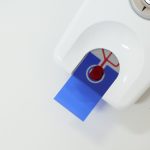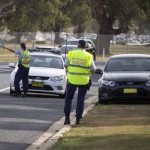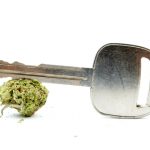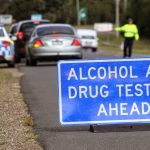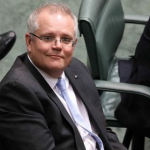Stop Testing Drivers for Minute Traces of Cannabis
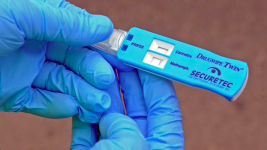
Most Australian states and territories currently carry out mobile drug testing (MDT) operations that only test for three illicit substances: amphetamines, MDMA and cannabis. In Tasmania and the Northern Territory, police test for longer lists of illegal drugs.
In NSW, authorities have recently announced trial testing for cocaine will begin later this year.
However, both the legitimacy and effectiveness of these programs is questionable. MDT regimes were implemented with the stated aim of improving road safety. However, unlike random breath testing for alcohol, roadside drug testing doesn’t test for driver impairment.
Rather, MDT operations are more about authorities taking a zero-tolerance approach to the use of selected illegal drugs. The MDT devices police use test for the miniscule traces of these illegal substances in a driver’s system, meaning individuals may test positive for drugs they ingested days prior.
The sixth recommendation of the Australia 21 report into illicit substances was that MDT practices should be “rigorously reviewed,” as their purpose “should be to ascertain whether the driver is unsafe or unfit to drive,” not to discover whether they’ve taken illegal drugs in the past.
The authors stressed this issue is particularly pertinent, “as the proposed new laws governing use of medicinal cannabis come into effect.”
It’s this set of circumstances that led University of Adelaide researcher Dr Michael White to produce the Cannabis and Road Crashes report, in which the doctor argues that cannabis should be removed from MDT operations.
A lack of evidence
Released this month, the research paper reviews eleven epidemiological studies on the relationship between the presence of the psychoactive compound of cannabis, THC, “in a body fluid and crashing.”
Based on the information in these leading studies, Dr White draws the conclusion that if the use of cannabis does increase the risk of crashing, then this increased risk is unlikely to be more than 30 percent.
However, according to the doctor, “there is no good evidence” provided within the studies to reject the hypothesis that cannabis use leads to no increased risk of road crashes.
The review considered whether there was evidence for a threshold level of THC in bodily fluids. A concentration of THC in a driver’s system below such a threshold would indicate there was no effect on their driving capabilities, while a concentration above the threshold would affect driving abilities.
This would be in much the same way as a 0.05 blood alcohol concentration works as the threshold for driving under the influence of alcohol in Australia.
Most of the eleven studies reviewed found no evidence of a THC threshold, or dose-related response. And the two that did, Dr White stated, made questionable claims. The doctor concluded that there is “no compelling evidence” for the existence of “threshold THC effects.”
The report also investigated “the possibility that the recent combined use of alcohol and cannabis exacerbates the effect of alcohol on crashing.” And again, the doctor found no evidence within the studies to support this conclusion.
Based on the findings of his review, Dr White recommends that cannabis should be removed from MDT operations if their purpose “is to improve road safety, rather than only to possibly deter the use of illegal drugs.”
A THC threshold
However, as noted by Dr White, the often cited authority on drug driving the 2013 Wolff report from the UK does support the existence of an exacerbation effect of cannabis on alcohol. And the report also supports a THC threshold.
The authors of the report outlined that the evidence shows that the combined use of cannabis and alcohol does lead to a higher risk estimate than just cannabis use alone. The report recommends a dual threshold that “takes into account the multiplicative effect” of the two drugs combined.
The Wolff report recommends a THC threshold, whereby a person can be charged with drug driving if their blood THC concentration is above the stated level. A higher amount of THC would be permitted in a driver’s system when it is not in combination with alcohol.
In line with road safety objectives, the Wolff report also provides stated threshold levels of use for cocaine, amphetamines, MDMA, both legal and illegal opioids, and prescription benzodiazepines.
The system in Norway
On February 1 2012, the government of Norway introduced impairment limits for operating a vehicle for a range of non-alcohol drugs. The laws involve twenty legal and illegal substances, which include THC, MDMA and amphetamines: the illicit substances all Australian jurisdictions test for.
Australia is the only country in the world that carries out widespread mobile drug testing that is based on technology that only tests for traces of a substance, rather than levels of a drug that are proven to affect a driver’s ability to safely operate a vehicle.
The existence of the Norway drug testing program is proof that the Australian laws are indeed unjust. And under the pretext of road safety, Australian authorities are actually using a backdoor method to punish people for illegal drug use.
Random breath testing for alcohol in Australia improved road safety, whilst transforming a once common practice into a highly stigmatised criminal behaviour. But, the MDT regime doesn’t have that potential while it continues to be based on a false premise.
Closing the loopholes
As the Australia 21 report pointed out, the continued inclusion of cannabis in this flawed regime will become increasingly problematic as medicinal cannabis use becomes more prevalent.
In August, the South Australian Legislative Council voted in favour of an amendment to new drug driving legislation that would provide a defence for patients who use medicinal cannabis if they failed a roadside drug test.
SA Dignity Party MLC Kelly Vincent put forth the amendment. Ms Vincent told Sydney Criminal Lawyers® last month that as with other legal medication, those patients who take medicinal cannabis “should be able to be assessed against their personal capacity to drive.”
However, SA road safety minister Chris Picton has since stated he’d be moving to ban patients using prescribed cannabis medicines from driving with the drug in their system, as it was creating a risky loophole.
As the roadside drug testing regime currently stands, this will mean that medicinal cannabis patients will be banned from using motor vehicles under any circumstances, as the medicine could show up in their system days after they last had a dose.
At the same time, people using prescribed opioid medicines and benzodiazepines can drive after having taken any dosage of these medicines without fear of prosecution, along with people who have taken heroin, ketamine and LSD for that matter.
Going to court for a traffic offence?
If you are going to court for a traffic offence, call or email Sydney Criminal Lawyers anytime to arrange a free first consultation with an experienced, specialist traffic lawyer who will accurately advise you of your options, the best way forward, and fight for the optimal outcome in your specific situation.



